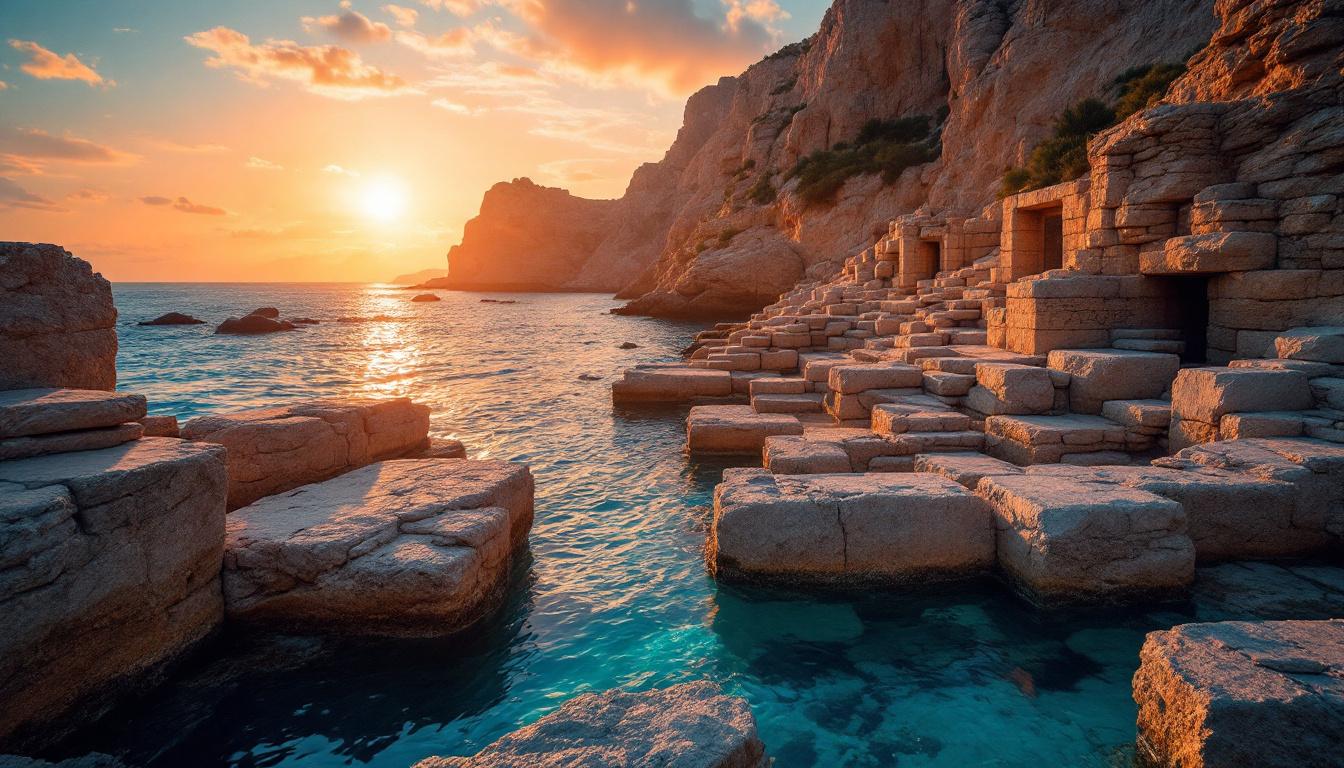Standing on the ancient cobblestones of Dalt Vila at sunset, I felt the weight of 3,000 years beneath my feet. This wasn’t the Ibiza I expected—no pounding basslines, no neon lights. Just the whisper of Phoenician ghosts and the scent of Mediterranean pine carried by evening winds.
The locals call this place Eivissa, its sacred Catalan name, and after three months of discovery, I understand why they guard it so fiercely. What I found here challenged everything I thought I knew about this legendary island.
This is the story of UNESCO’s most extraordinary Mediterranean secret—a place where ancient civilizations left treasures that transform even the most seasoned travelers into wide-eyed explorers.
The accidental discovery that changed everything
When party paradise revealed its hidden soul
I came for the famous sunset at Café del Mar, but missed my taxi and wandered into the old town by accident. Within minutes, I was standing before 16th-century Renaissance fortifications that rival anything in Rome or Florence.
The massive stone walls, built by Italian engineers under Charles V of Spain, rose like a crown above the Mediterranean. Local guide Maria whispered, “Tourists see the clubs. We see the cathedral where our ancestors prayed for 500 years.”
The moment ancient history became tangible
At Sa Caleta, I touched stones laid by Phoenician hands in the 8th century BC. This isn’t reconstructed theme park history—these are the actual foundations where Mediterranean civilization began its westward journey.
The archaeologist explained how these ruins represent the earliest Phoenician settlement in the western Mediterranean. Standing there, I realized I was experiencing something no guidebook adequately describes: the birthplace of European maritime culture.
What I found that guidebooks never mention
The underground city of the dead
Puig des Molins necropolis stretches across 5 hectares, containing over 5,000 ancient graves from Punic, Roman, and Islamic eras. Walking through these tunnels felt like entering a three-dimensional history book written in stone and bone.
The museum displays funeral artifacts so intricate, so personal, they make ancient civilizations feel immediate and real. I spent hours studying Carthaginian jewelry and Roman pottery, each piece telling stories of lives lived 2,000 years ago.
The living underwater forest few tourists see
Beneath Ibiza’s crystal waters lies Posidonia Oceanica—underwater meadows older than human civilization. These seagrass forests, some specimens dating back 10,000 years, produce the oxygen that makes Mediterranean waters so pristinely clear.
Diving through these ancient underwater gardens, I understood why UNESCO protects them as zealously as the Phoenician ruins. This marine ecosystem shapes everything from water clarity to coastal protection, a living monument to geological time.
The transformation that surprised me most
How mass tourism couldn’t destroy sacred spaces
Despite millions of annual visitors, Dalt Vila remains untouched by commercialization. Strict UNESCO regulations prevent chain stores, neon signs, or modern construction within the historic walls.
Evening strolls through narrow medieval streets feel like time travel. Local families still live in houses built during the Renaissance, maintaining traditions that predate tourism by centuries. The contrast between ancient reverence and modern excess creates an almost surreal authenticity.
The spiritual awakening I never expected
Watching sunrise from the Cathedral of Our Lady of the Snows, I experienced something profound. This wasn’t religious conversion—it was cultural awakening to the Mediterranean’s deepest spiritual roots.
The cathedral’s Gothic arches frame views across waters where Phoenician traders first glimpsed this sacred island. Standing where countless generations have stood, seeking meaning beyond material pleasure, fundamentally shifted my understanding of what travel can offer.
Why I’ll never travel the same way again
The lesson only UNESCO sites can teach
Real transformation requires protected spaces where ancient wisdom survives modern pressures. Ibiza taught me that beneath every tourist destination lies deeper cultural DNA waiting for respectful discovery.
Now I seek UNESCO World Heritage sites where local communities guard living history, understanding that true travel luxury isn’t exclusive beaches—it’s exclusive access to humanity’s most sacred cultural continuity.
How ancient stones became modern medicine
Three months exploring Phoenician Ibiza cured my restless wandering. I discovered that seeking novelty pales beside experiencing cultural depth that spans millennia.
This island’s gift isn’t perfect weather or world-class nightlife—it’s proof that 3,000 years of human devotion creates spaces where modern souls find ancient peace they didn’t know they were seeking.
Your guide to sacred Eivissa discovery
When do locals recommend visiting UNESCO sites?
Early morning or late afternoon provides optimal lighting for photography and cooler temperatures for comfortable exploration. Local guides suggest avoiding midday crowds.
How much time do sacred sites require?
Minimum full day for Dalt Vila, Sa Caleta, and Puig des Molins. Underwater Posidonia tours need separate half-day commitment.
What cultural etiquette should visitors observe?
Respectful clothing in cathedral areas, quiet voices in archaeological zones, and supporting local cultural preservation initiatives through responsible tourism choices.
Sacred Eivissa waits for travelers ready to discover that the most profound journeys happen not when we escape history, but when we finally embrace our place within its eternal story.
